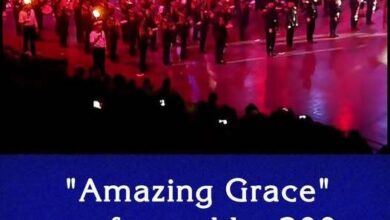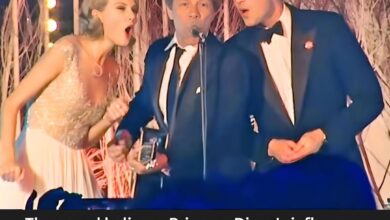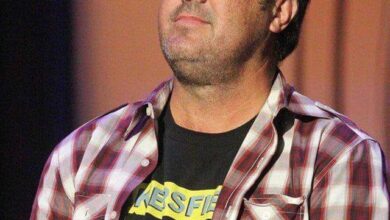Stevie Wonder’s “Fingertips, Pt. 2” Transforms Live Performance in 1963
In 1963, Stevie Wonder astonished the music world with “Fingertips, Pt. 2,” a live instrumental track that broke all the rules of conventional pop music. Recorded when Wonder was only 13 years old, the song quickly captured national attention with its electrifying energy and infectious groove. Its spontaneous, high-octane performance not only soared on the charts but also signaled a new era where raw talent and live musicianship could redefine what a pop hit sounded like.
Born Stevland Hardaway Judkins in Saginaw, Michigan, Stevie Wonder emerged as a prodigy with a natural affinity for music. His early years were marked by an impressive command of multiple instruments and an innate sense of rhythm that set him apart from his peers. Discovered by Motown at a young age, Wonder was quickly ushered into a world where his boundless talent could flourish. His precocious ability to blend funk, soul, and pop elements made him a standout figure even before his teenage years fully blossomed.
The inspiration behind “Fingertips, Pt. 2” was as spontaneous as the performance itself. Emerging from a live show, the track captures a moment of pure musical improvisation that resonated deeply with audiences. Unlike many meticulously crafted studio recordings of the time, this performance was raw and unfiltered—a testament to Wonder’s innate creativity and his ability to connect with his audience on a visceral level. It was during these live sets that his passion for music truly shined, and “Fingertips, Pt. 2” became a perfect encapsulation of that energy.
The recording of “Fingertips, Pt. 2” took place during a live performance, where the spontaneity of the moment was captured with minimal studio intervention. Motown’s engineers preserved every nuance of Wonder’s performance—the rapid-fire harmonica, the dynamic interplay between the instruments, and the palpable excitement of the crowd. This live recording technique lent the track an authenticity that set it apart from the polished, pre-produced hits that dominated the airwaves, allowing listeners to feel as if they were right there in the room.
Upon its release, “Fingertips, Pt. 2” quickly climbed the charts, becoming one of Motown’s earliest major hits and cementing Stevie Wonder’s reputation as a musical prodigy. The single soared into the top ten of the Billboard Hot 100, a remarkable achievement for such an unconventional live recording. Its crossover appeal was undeniable, capturing both young audiences and seasoned music lovers alike, and the track’s success marked a turning point in how live recordings could achieve commercial viability.
Culturally, “Fingertips, Pt. 2” had a profound impact on the music industry. At a time when pop music was dominated by carefully engineered studio tracks, Wonder’s live performance reminded the world of the magic inherent in unscripted, authentic musicianship. The track’s electrifying energy and raw power bridged the gap between R&B, soul, and rock, paving the way for future live recordings to be embraced by mainstream audiences. Its success helped to shift industry perceptions, proving that live, spontaneous music could be just as compelling as meticulously crafted studio productions.
For Stevie Wonder, the breakthrough provided by “Fingertips, Pt. 2” launched his career into the stratosphere. The track opened doors for international tours, television appearances, and collaborations with some of the biggest names in music. As a young artist catapulted into the limelight, Wonder’s ability to captivate audiences with his live performances became a defining aspect of his career. His subsequent records continued to showcase his evolving artistry, but none could quite match the electrifying impact of that unforgettable live moment.
The influence of “Fingertips, Pt. 2” extended far beyond Wonder’s personal trajectory, setting a new standard for live performance recordings in the pop and soul genres. It inspired a wave of artists to explore the possibilities of capturing live energy in their recordings, blending improvisation with structured songwriting. The track’s innovative approach helped to shape the future of live albums and paved the way for artists who sought to capture the raw immediacy of their performances on record.
Over the decades, “Fingertips, Pt. 2” has been covered and referenced by a variety of musicians, each paying homage to its groundbreaking spirit. From jazz ensembles to modern pop and R&B artists, the track’s iconic status has led to numerous reinterpretations. Each rendition echoes the original’s sense of spontaneity and raw musicality, underscoring its timeless appeal and the universal language of live performance.
At the time of its release, the world was witnessing not just the birth of a star, but a cultural phenomenon. The energy and authenticity of “Fingertips, Pt. 2” captured the hearts of millions, coinciding with a period of social and musical revolution in America. As the country navigated the complexities of the early 1960s, Wonder’s performance offered a moment of pure, unadulterated joy—a counterpoint to the era’s turbulent backdrop.
Decades later, the legacy of “Fingertips, Pt. 2” remains a cornerstone of live performance history. It continues to receive airplay on classic hits stations and is celebrated in retrospectives as one of the most important live recordings of its era. Its inclusion in numerous “greatest hits” compilations and its frequent presence in music documentaries attest to its enduring influence on generations of listeners and musicians alike.
The track’s innovative production and live recording techniques set a new benchmark for the music industry. By proving that a live performance could achieve commercial success without sacrificing authenticity, “Fingertips, Pt. 2” reshaped the way future artists approached recording their music. Its influence can be heard in the work of countless performers who have embraced the raw power of live recordings, blending studio polish with the electric immediacy of a live show.
Although Stevie Wonder would go on to achieve even greater artistic heights in the decades that followed, “Fingertips, Pt. 2” remains a seminal moment in his storied career. The song encapsulates the early spark of genius that would eventually redefine popular music across the globe. It serves as a reminder of the limitless possibilities that arise when young talent is given the freedom to express itself without restraint.
In reflecting on its impact, “Fingertips, Pt. 2” endures as a testament to the power of live performance and the indomitable spirit of innovation. Its raw energy, captured in a moment of unbridled creativity, continues to inspire artists and delight listeners nearly six decades later. For many, it is more than just a song—it is a snapshot of a moment when music transcended the ordinary to become something truly extraordinary.
Ultimately, Stevie Wonder’s “Fingertips, Pt. 2” remains a landmark in music history—a bold declaration that live performance could change the landscape of pop and soul forever. Its legacy is woven into the fabric of modern music, reminding us that true artistry often lies in the spontaneity of the moment. As fans and critics alike celebrate its lasting impact, the track continues to inspire future generations to embrace the magic of live, unfiltered expression.



